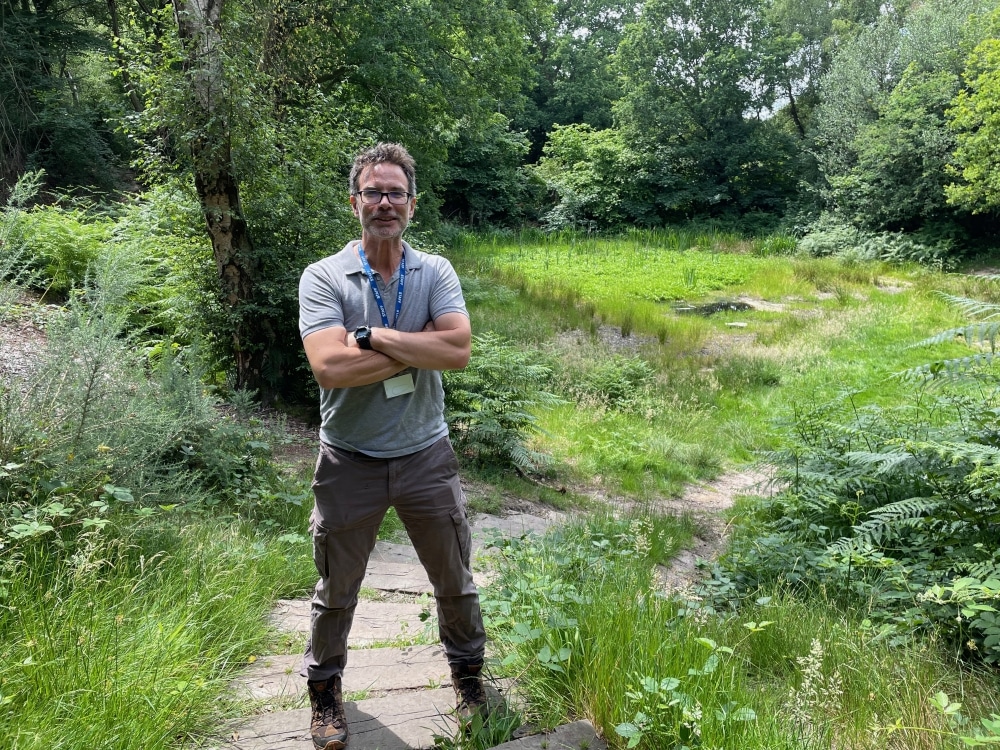An ecologist who once enjoyed the dream job of being a ‘bodyguard for rhinos’ against poachers in South Africa, Dan will take on responsibility for 250 acres of some very ancient habitats in the middle of the town, from this Friday (July 1). The Tunbridge Wells Commons extend from the A26 (Eridge Road and Vale Road) in the south and east, to Bishops Down and Mount Ephraim on the north side. To the northwest, they connect with Rusthall Common.
Despite having lived in Tonbridge and Heathfield for two decades, and having worked in Crowborough and National Trust properties in the area, Dan admitted the size, beauty and biodiversity of the Commons had taken him by surprise when he saw the job advertised.
“I had no idea it existed. I am always around Tunbridge Wells, but never really knew what was behind that line of trees in town. But I knew immediately I needed the job to be mine.”
Dan will spend his first six months tracking how wildlife and humans use the Commons, what the pressures are, and how the land and daylight patterns change over the seasons. He told the Times that visits have declined since the pandemic when there was a surge in use.
“The numbers have definitely seen quite a profound drop-off since then. For wildlife, this is great, because their refuge had been shared with a lot more people,” he said.
“But the pressures have been significant,” he added, noting that in his previous National Trust work he had seen new paths beaten into wilder areas and main paths being widened due to greater use.
He said that access to nature had, however, given people an appreciation of resources like the Commons, and an awareness he hoped would persist.
“It was hard for people, so we must grateful that this was here,” he said.
But Dan added that he was already aware that the Commons is a potential island that must not be cut off from other wildlife areas if it is to remain diverse.
“There are barely any swallows and swifts – both migratory birds – left, because of a lack of insects,” he said, adding that meadowland was more vulnerable to development than woodland areas because the importance of ‘wildlife corridors’ was not understood.
“We have a Woodland Trust, and it is bonkers to me that we don’t have a Meadow Trust as well.
“We are very sympathetic to the fact that there is a need for housing, with a growing population, but we have to be much cleverer.
“Developers tend to clear an area and then start from scratch,” he said, pointing to construction projects like the crematorium, during which he said an ancient hedge had been ripped out and then re-planted but not necessarily re-established as a wildlife route.
Follow Dan’s work at TWCommons.org








